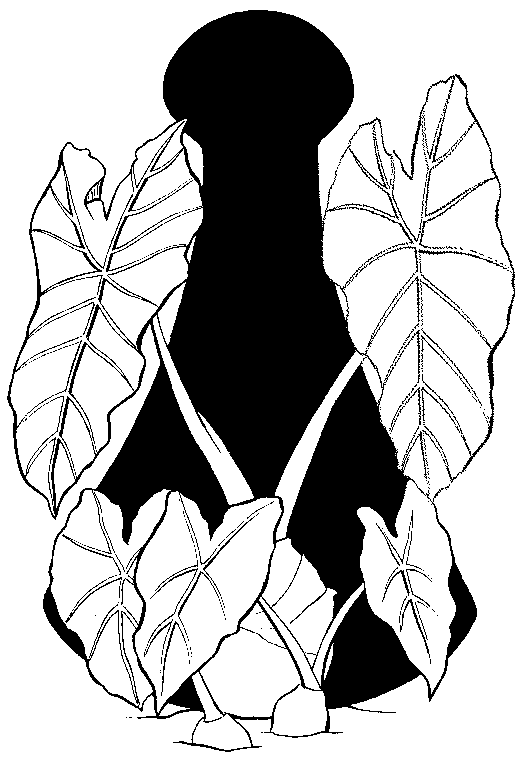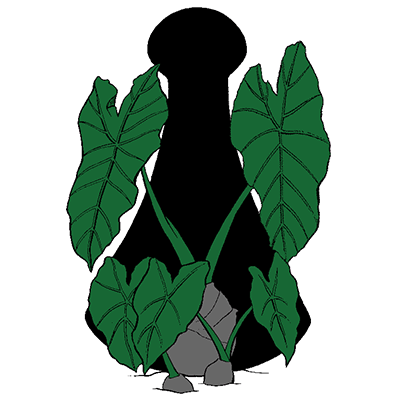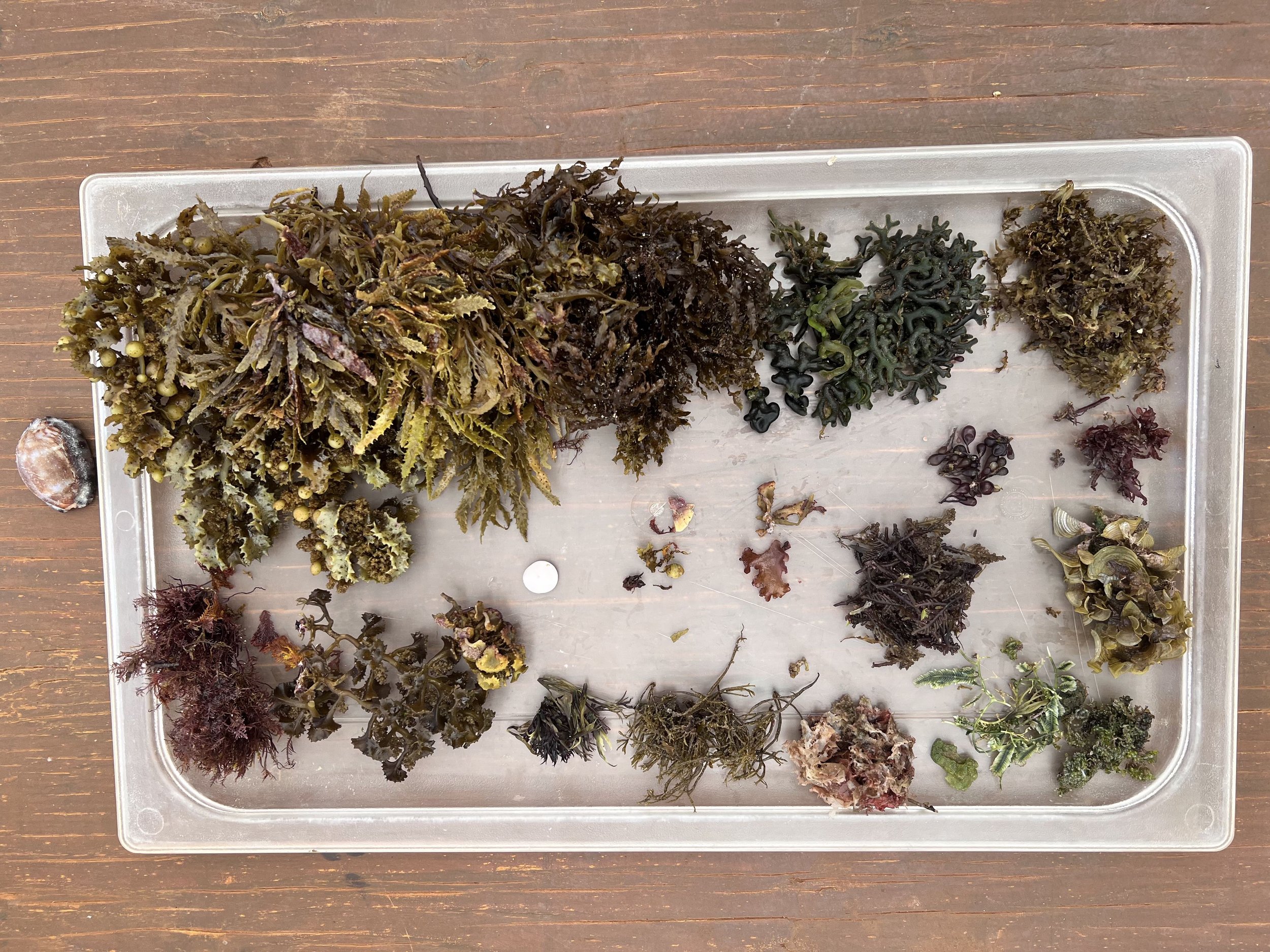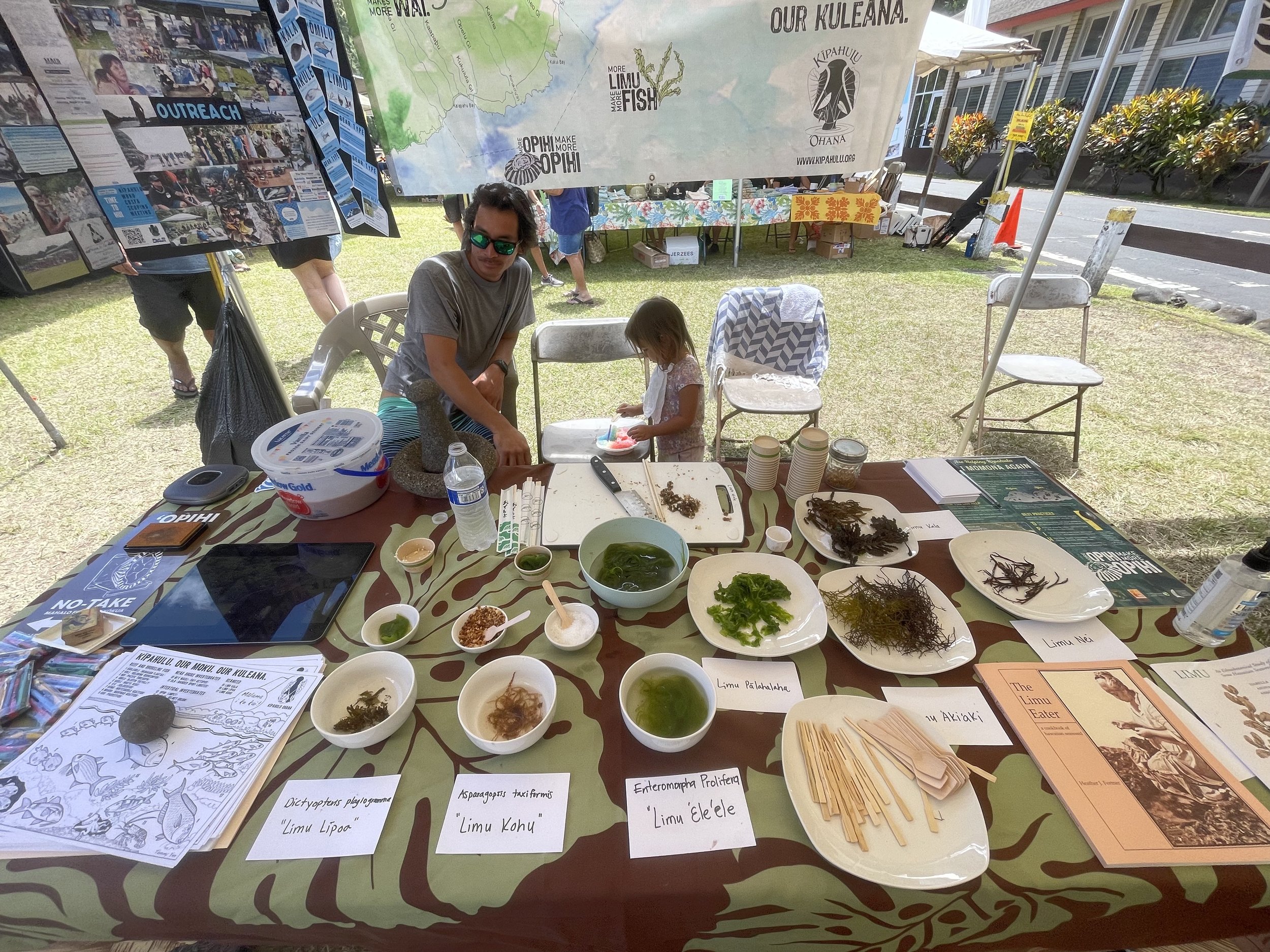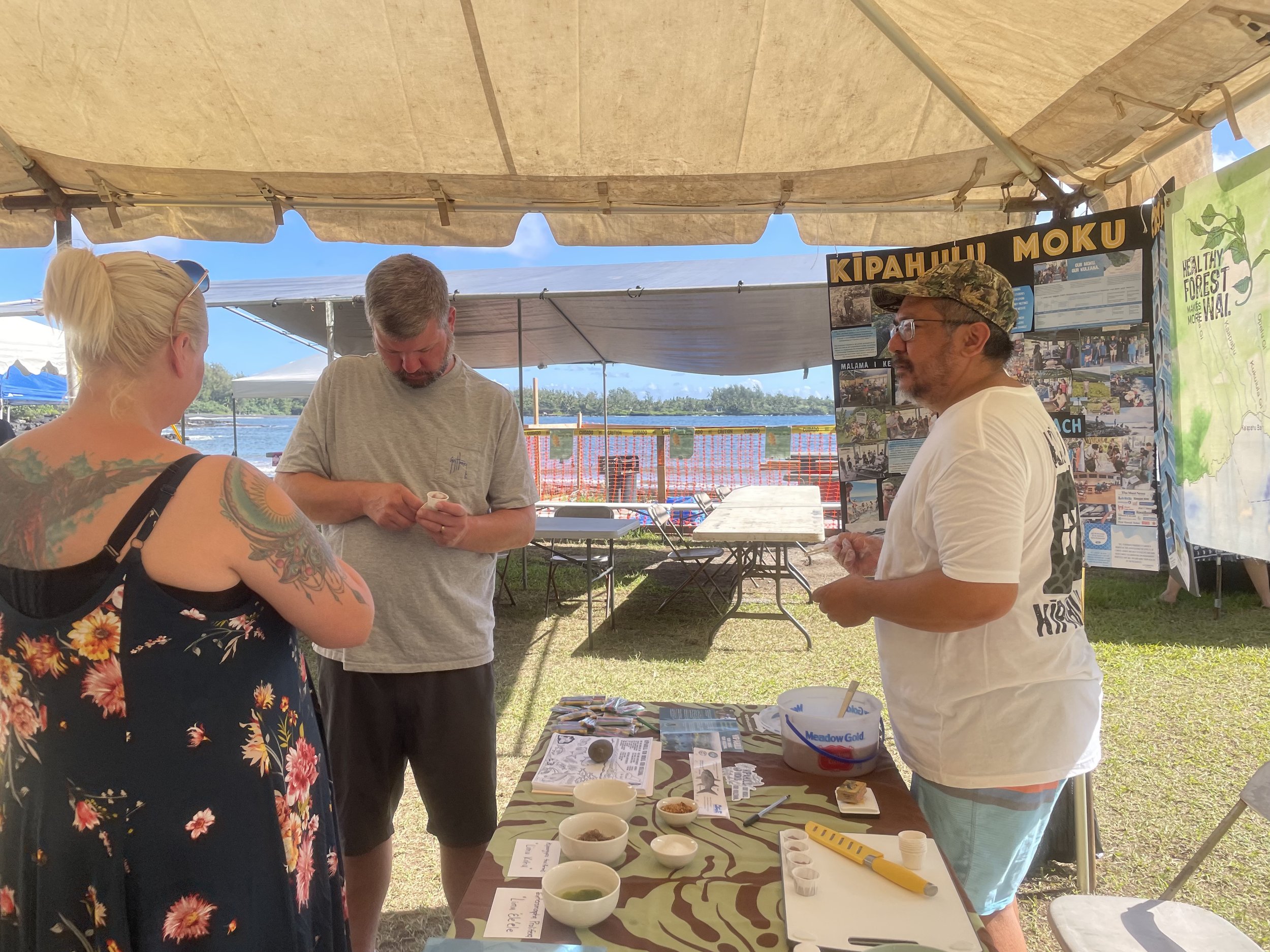“I love seaweeds,” she enthuses, “but those two creep around in places they should not be, and hookweed drags limu kala down into a ball so the tide takes it up on the beach where it dries up. That’s not a hospitable way for a visitor to behave.”
In our 2012 Malama I Ke Kai Community Action Plan (PDF), The Kipahulu Ohana prioritized limu (Hawaiian seaweed) as part of it's ocean goal: "Inā mālama ‘oe i ke kai, mālama no ke kai iā ‘oe. If you care for the ocean, the ocean will care for you" with the following objective: Actively maintain healthy native limu abundance on shoreline at current levels.
Limu has important ecological, nutritional and cultural values. The limu serves as food and shelter for herbivorous fish and are the foundation of the food chain. Limu is rich in minerals and other nutrients and is served in many Hawaiian dishes, like poke. Some limu are used medicinally, and others are considered highly sacred and are used ceremonially, and have ancient stories around them.
The Kipahulu Ohana conducts limu education and propagation activities, and supports and participates in the annual Hāna Limu Festival with limu planting demonstrations and education about our makai efforts and Community-Based Subsistence Fishing Area designation application. We are part of the Limu Hui.
Visit the Hāna Limu Festival website for educational videos and other resources about limu.
LIMU
Limu: Our ‘Ono Hawaiian Tradition

Limu Festival
Each year the Festival brings people from across the islands to enjoy a weekend of music, hula, games, arts and crafts, and a silent auction. Funds raised benefit Nā Mamo O Mū‘olea’s Scholarship for Hāna students committed to higher education and the Hāna community.
All events are free and are open to the public.
Some cultures have learned to use marine resources, including marine plants. Among Pacific Island cultures, Hawaiians have developed more uses of algae as food and medicine. The reasons for this are unclear, however, Phycologist (algae expert) Isabella Aiona Abbott has some logical hypotheses based upon the 'ai kapu and traditional practices of Hawaiian women. This episode discusses some of the species of algae that are eaten in Hawai'i and the life experiences of Isabella Abbott as a native Hawaiian scientist.
Limu kala, probably the most important seaweed in Hawaiʻi.
Born in Hāna, Hawaiʻi, to a Chinese father and Hawaiian mother, Abbott was the only girl and second youngest in a family of eight siblings. Her father had immigrated to Hawaiʻi at age 18 to work on the Kīpahulu sugar plantation. Five-plus years later, he had completed his contract, paid back his recruitment expenses and opened a thriving general store and learned to speak fluent Hawaiian.
“I had to learn Hawaiian because my parents would talk to each other at home and I couldn’t understand what they were saying,” Abbott confesses.
Her romance with seaweeds started around the time her parents moved the family to Honolulu. “My older brothers had to go to high school, and the only high school on Maui—Lahainaluna—well, there was no way you could get to Lahaina from Hāna in those days,” she explains.
Along Honolulu’s south shore, and during summers spent in Lahaina where her grandmother lived, Abbott and her younger brother searched for limu under her mother’s direction. “When you’re looking for seaweeds, you’re not drowning or doing crazy things in the water, so my parents were happy to take us to the beach,” she recalls with a chuckle.
Her mother knew the Hawaiian names of almost all the edible species. Those she didn’t know, she called ʻōpala (rubbish).
“Hawaiians ate seaweed raw. It was cleaned and pounded and salt added as a preservative,” says Abbott, an accomplished cook. “It was massaged to release the flavors. That’s where you get lomi salmon. Many older Hawaiians, myself included, eat limu by itself because we like it. It has vitamins and minerals. Today, people think all limu taste alike, or yuck. We’ve moved to a cuisine that uses it more as a pickle.”
Ogo (the Japanese name for the genus Gracilaria) is blanched and marinated. Limu kala, on the other hand, can be dipped in tempura batter and deep-fried, “like a taro chip. Very tasty,” she adds.
“My mother wasn’t happy that the seaweed I picked as my lifelong favorite was a real ʻōpala alga—Liagora,” confides Abbott. “It’s calcified. You can’t eat it. It’d be like putting sand in your mouth.”
(Pioneering professor is first lady of limu | October 21st, 2010 | by Jennifer Crites ) Isabella Kauakea Aiona Abbott, a University of Hawai‘i at Mānoa ethnobotany professor emerita who was known worldwide as a gifted algae taxonomist, passed away on October 28 at the age of 91. 